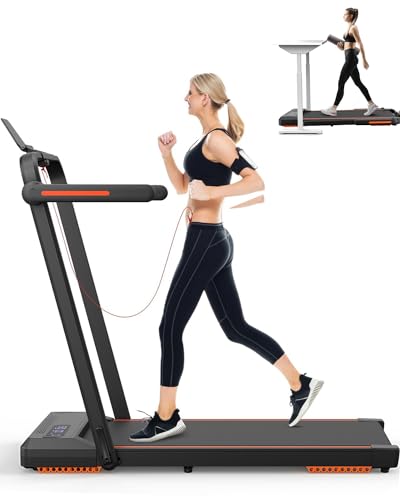What's The Current Job Market For Treadmill Non Electric Professionals…
페이지 정보
작성자 Maximilian 작성일25-09-15 13:35 조회3회 댓글0건관련링크
본문
Treadmill Non-Electric: The Eco-Friendly Fitness Solution
In an era dominated by electric devices and modern gadgets, the modest non-electric treadmill stands out as a beacon of simplicity and effectiveness. Often eclipsed by their high-tech counterparts, non-electric treadmills provide numerous advantages that accommodate a sustainable lifestyle and a solid exercise. This post will check out the benefits, functionality, and range of non-electric treadmills, making a strong case for their role in contemporary fitness routines.
What is a Non-Electric Treadmill?
A non-electric treadmill, also known as a manual treadmill, runs without electric power. Rather, it relies on the user's energy to move the belt. This kind of treadmill typically has a curved or flat running surface and a belt that moves as the user strolls or runs, thereby providing a full-body cardiovascular exercise.

Secret Features of Non-Electric Treadmills
| Function | Description |
|---|---|
| Source of power | Manual Walking Treadmill operation (user-powered) |
| Design | Curved or flat treadmill surface |
| Mobility | Normally light-weight and easy to move |
| Sturdiness | Less mechanical elements; frequently made of high-quality products |
| Cost | Normally more affordable than electric treadmills |
| Footprint | Typically smaller sized, making them suitable for restricted areas |
| Noise Level | Quieter operation compared to electric versions |
The Advantages of Non-Electric Treadmills
1. Eco-Friendly
Non-electric treadmills are a sustainable choice for fitness enthusiasts. With no electricity usage, they reduce carbon footprints and total energy usage.
2. Cost-efficient
With fewer mechanical components and no wiring systems, non-electric treadmills are typically more inexpensive. This makes them accessible and enticing to individuals aiming to keep a healthy lifestyle without breaking the bank.
3. Increased Workout Intensity
Considering that the user powers the belt, they have complete control over their exercise's intensity. The more difficult you push, the more calories you burn. This self-powered feature motivates a more engaged exercise, pressing limitations for a much better fitness result.
4. Compact and Portable Design
A lot of non-electric treadmills have a lightweight building and construction and smaller footprint, making them simple to store and transportation. This function enables users to integrate cardio workouts into various settings, whether in your home, in the office, or at a fitness center.
5. Lower Maintenance
Non-electric treadmills have less moving parts than electric variations, which equates to lower maintenance costs and less mechanical failures gradually.
Types of Non-Electric Treadmills
Non-electric treadmills can be found in various styles to accommodate diverse physical fitness needs. Here's a brief introduction:
| Type | Description |
|---|---|
| Curved Manual Treadmill | Functions a curved running surface for a natural gait. Outstanding for sprinting and interval exercises. |
| Flat Manual Treadmill | An uncomplicated style similar to conventional treadmills however powered by the user's movement. |
| Foldable Manual Non-Folding Treadmill | Compact style that can be quickly folded and stored away when not in usage. Ideal for small home. |
| All-Terrain Manual Treadmill | Designed for outdoor usage, these treadmills often include a rugged build and traction control. |
Frequently Asked Questions (FAQ)
1. Are non-electric treadmills suitable for novices?
Yes, non-electric treadmills can be suitable for newbies. Users can change the intensity and speed of their exercises based on their physical fitness level.
2. Can I utilize a non-electric treadmill for running?
Definitely! Many non-electric treadmills, specifically curved models, are created for running. Their self-powered nature permits users to participate in running or sprinting.
3. What types of workouts can I carry out on a non-electric treadmill?
Users can engage in different workouts, including Walking Treadmill, running, running, interval training, and even hill exercises by adjusting their position.
4. How do I preserve a non-electric treadmill?
Basic maintenance includes regularly inspecting the belt for wear, ensuring it is focused, and cleaning the surface area to avoid particles from impacting movement.
5. Are Non Folding Treadmill-electric treadmills noisy?
Non-electric treadmills tend to be quieter than electric ones, as they lack motors that can produce noise. Users might still generate noise based on their speed and weight.
Tips for Maximizing Your Non-Electric Treadmill Workouts
To get the most out of your non-electric Treadmill Non Electric sessions, think about the following ideas:
Warm-Up Properly: Always begin with a warm-up session to prepare your body for the exercise.
Incorporate Interval Training: Alternate in between high-intensity sprints and moderate walking to improve calorie burn and enhance endurance.
Concentrate on Form: Maintain correct posture and type while going to minimize the danger of injury.
Hydration is Key: Keep water neighboring to stay hydrated during your workouts.
Track Your Progress: Use a fitness tracker or mobile phone to monitor your workout performance and progress in time.
The non-electric treadmill sticks out as a long-lasting, environment-friendly piece of exercise devices that effectively caters to both beginners and skilled physical fitness enthusiasts. With its wide variety of benefits, consisting of cost-effectiveness, ease of use, and portability, it supplies a sustainable alternative in the evolving physical fitness landscape. For those aiming to streamline their exercises while embracing an active way of life, non-electric treadmills might be the perfect option. It's time to redefine your workout experience away from the interruptions of innovation and towards the basics that keep you fit and healthy!
댓글목록
등록된 댓글이 없습니다.

